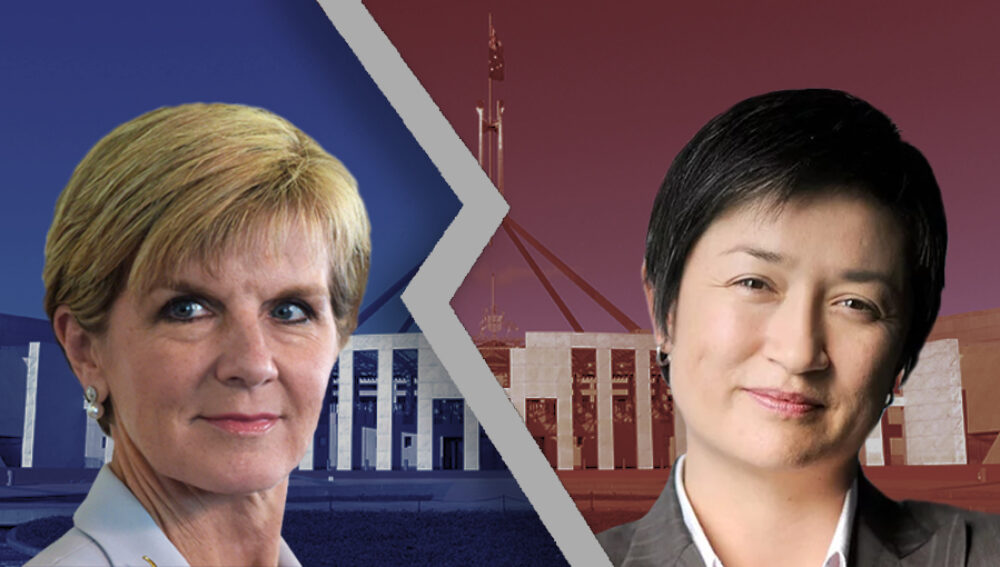In the flurry of commentary about Australia’s latest Foreign Policy White Paper there has been some talk on the apparent bipartisan support that the document has garnered. As there should be. In liberal democracies like Australia domestic political agreement on matters of foreign policy can provide a reassuring indicator of long term policy coherence and success.
Opening her piece in The Australian on the White Paper, Penny Wong, Australia’s Shadow Foreign Minister, stated that her party would not repeat the treatment that the Abbott Government meted out to the 2012 Australia in the Asian Century White Paper. That might have been cause for some relief in Canberra’s strategic circles. However, it is important to take note of Wong’s concluding sentence: ‘…Labor will take up those parts of the white paper that take our national policy forward and incorporate them into Labor’s foreign policy thinking.’
Taking a closer look, one can observe the cracks emerging in the foreign policy perceptions and priorities of the two major Australian political parties, which might mean that the policy vision outlined by the current document could be significantly altered if a new government is elected in 2019.
Australia’s two leading parties differ in their perception and approach towards China; this difference has become clearer in recent months and leads to competing foreign policy visions with significant implications for Australia and the region. While the Government has been increasingly critical of China’s aggressive behaviour in the region and is seeking to build stronger relations with ASEAN on the one hand and with India, Japan and the US on the other, Labor continues to believe that China holds the key to a prosperous and secure Australia’s future. ‘Labor doesn’t share the same fear about the rise of China, we welcome the rise of China…’ Shadow Prime Minister Bill Shorten remarked while responding to the White Paper release. The Labor Party’s ‘open-eyed’ approach to China’s Belt and Road Initiative (BRI), outlined in the AsiaFuture policy vision announced by Shadow Treasurer Chris Bowen in September 2017, contrasts tellingly to the cautious approach of the Liberals, who highlight the need for maintaining ‘robust social and environmental safeguards’ and avoiding ‘unsustainable debt burdens’ on regional economies in the context of the BRI.
The most significant change that would come about if Labor secures a victory in 2019 would be in the way that Australia defines its region: the ALP doesn’t necessarily share the Liberal party’s enthusiasm on the Indo-Pacific. As Wong remarked in a speech in October 2017, ‘If we want to get it right with Asia, we need to get it right with China.’
A nuanced reading of the AsiaFuture policy reveals a Sino-centric worldview where Australia would place a premium on its relationship with China, which is starkly different to this government’s backing of an open and prosperous Indo-Pacific underwritten by a US-led rules-based order. Seemingly, the Labor party does not believe that there is a discrepancy between being a close US ally and having strong relations with China as it maintains that China has vested interests in preserving the stability in the region, congruent to Australia’s core interests. On the other hand, the LNP government, while recognising the importance of China to Australia’s economic prosperity, tends to take a more cautious approach and places emphasis on the need for Australia to ensure China’s peaceful rise.
Divergences on how Australia perceives and deals with China affect the overall tenor of its foreign policy outlook. For example, a Labor government might be averse to continuing Australia’s participation in the quadrilateral security dialogue with Japan, India and the US, as indicated by its refusal to endorse the latest quad meeting held in Manila in November 2017. As Greg Sheridan suggests, this has the potential to damage Australia’s relations with India, which would put breaks on the momentum this relationship has gained in recent years. A repeat of the 2007 withdrawal from the quad could seriously damage Australia’s credibility, already on thin grounds in India’s eyes. Moreover, Australia under a Labor government would arguably be more tempered in its reactions to developments around China’s forays into the South China Sea. This could lead to a potential dilemma if Trump is ousted and replaced by a more conventional US administration in 2020; in other words, if the US comes back to the region and expects robust support in containing China in the South China Sea.
Admittedly, the next federal election is still a long way off and much could change between now and then. However, recent trends portend a potential divergence and even dilemma in the way that Australian political parties approach the nuances of foreign policy. Australia’s foreign policy bipartisanship may not run as deep as we think.








